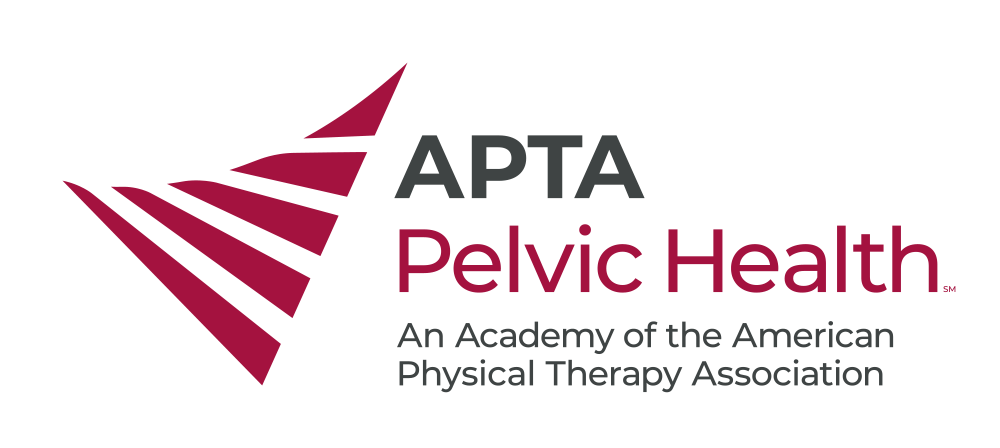Hyperemesis Gravidadum: Pelvic Floor Implications
There is a small percentage of the pregnant population who experience severe nausea and vomiting. These individuals may be diagnosed with hyperemesis gravidadum and commonly experience dehydration, weight loss, and vitamin and mineral deficiencies. Medical intervention is often required, and some can end up hospitalized based upon the severity of their presentation.
Until I was diagnosed with hyperemesis gravidadum (HG), I did not consider the effects that it could have on the pelvic floor. As a mother of three, and having experienced hyperemesis for the duration of all of my pregnancies, I can attest to the challenges that occur. Here are a few things that I hope physical therapists consider.
- Dehydration
We all know that dehydration is caused by lack of fluid intake and/or the inability to retain. It is associated with light-headedness, fatigue, decreased blood volume, muscles cramps, decreased urinary output, concentrated urine, and constipation (just to name a few).
Now, let’s talk more about how dehydration can affect your pelvic floor. The pelvic floor is comprised of several muscles that need water, just like all of the other muscles in the body. With dehydration, muscles do not function as well as they should. Also, dehydration also makes the urine more concentrated and can lead to bladder irritation.
Another effect from dehydration is constipation. Dehydration decreases the effectiveness of peristalsis. Peristalsis is the mechanism of the smooth muscles in the intestinal region that help to move waste along. Further complicating constipation, the decrease in water makes the stool harder. This will lead directly into the next consideration.
2. Constipation
Constipation occurs when bowels are hard to pass and/or when stool remains in digestive tract too long. Constipation can result in pain in the abdominal region, rectum, and anus. If left untreated, or poorly managed, it can lead to hemorrhoids, rectal prolapse, decreased sphincter control, impaction, and fecal incontinence. Not every individual with constipation will experience all of these symptoms.
Another issue that occurs, is the change in pressure management involving the pelvic floor. If stool is hard to pass, most individuals will attempt to use a closed glottis push with a downward force to try to force the stool to descend into and out of the rectum. This is highly problematic as this approach can overload the pelvic floor and weaken structures that are meant to offer support.
3. Intra-abdominal Pressure
Just as with coughing and sneezing, heaving and vomiting causes a pressure change within the intra-abdominal cavity. This causes a pressure change at the pelvic floor region as well. The repetitive nature of this condition causes increased strain to be placed on the pelvic floor and can result in incontinence.
If this sounds similar to what happens to women when they go through a coughing spell, it is because it is the same concept. These muscles can become weak, fatigue, or even overloaded.
What can we as physical therapists due to help clients experiencing HG? First, we need to make sure that we assist with advocating for medical management. HG is a diagnosis that may need medical management as malnutrition and dehydration can place both the mom and baby at risk. Referral to the appropriate medical providers is essential. With proper medical management and monitoring, these next few steps are some things that can be done to assist with managing potential pelvic floor dysfunction.
- Managing dehydration
Small sips of water or ice chips may be beneficial. With my most recent pregnancy, I personally could only tolerate small bites of crushed ice. Because we are individuals, what one individual is able to tolerate may not mean that another can tolerate the same type of fluid.
It is possible that someone battling HG cannot tolerate liquids of any form well and intravenous hydration and electrolyte replenishment maybe needed. This should of course include referral to the appropriate medical provider to ensure that this is appropriate and safely implemented.
2. Managing constipation
I would not be a physical therapist interested in the pelvic floor unless I mentioned the squatty potty, right? There are so many types of stools that can be used to help with this positioning (you can even use boxes or books). The idea is to have the knees elevated above the hips. This leg position with a slight forward lean can be helpful.
If a client is complaining of constipation and/or inability to pass stool, referral to another medical provider may be indicated. There are times medications are needed or other procedures are required.
As mentioned previously, constipation can be a direct cause due to dehydration. So, any method of improving hydration can also help to manage constipation-based symptoms.
3. Managing pressure changes
This can be challenging to manage, but also very important to help decrease the amount of strain placed on the pelvic floor. To help manage this, positional changes during an episode can be beneficial. For me personally, I felt less pressure on my abdominal region and pelvic floor if I was able to kneel when I had the uncontrollable urge to heave or vomit. When I was standing, my pelvic floor fatigued much more rapidly. To my knowledge there is no research on the influence of position during one of these episodes, and it is possible that the position of less strain could be different from one individual to the next. However, as physical therapists it is key that we ask questions to find out what positions symptoms are worse to help better educate and instruct for management.
Focusing on breathing can be a helpful tip as we know that the pelvic floor directly responds with each breath that we take. Calming techniques with breathing in between episodes of vomiting can help manage symptoms. I would love to tell you that I was able to control my breathing during and focus on gaining improved rib expansion and eliciting the appropriate pelvic floor response, but that would be a false. For me personally, exhaustion would take over and I would just be happy to have a break from the heaving. I say all of that to say, that it is important to educate your clients and still to stress the importance of self-grace and rest when battling HG.
Pressure management in regards to uncontrollable bodily functions can be quite challenging, and supportive devices, such as a pessary, can help. Pessaries are medical devices that are inserted into the vagina to assist with symptoms of prolapse and/or stress urinary incontinence. Pessaries may not be appropriate for all pregnant women. Even though physical therapists in the United States are able to fit and manage pessaries, it is important that this be discussed both with the patient and the obstetrics team for the safety of both mom and baby.
They say that personal experience can be the best educator. That is true for me and thankfully that does not have to be the truth for you. I am optimistic that my personal experience and the information provided will begin to challenge the thinking about the involvement of physical therapists in managing those suffering from hyperemesis gravidadum.

Author: Dionne Middlebrooks, PT, DPT, OCS, CSCS
January 2023 Scholarship Recipient
Author Bio: Dionne Middlebrooks is married to a navy veteran and they have three children. She has a diverse treatment background including pelvic health, vestibular, and orthopedics. She is a former All-American sprinter who enjoys running with her family. In addition to running, Dionne enjoys reading and trying new recipes.


